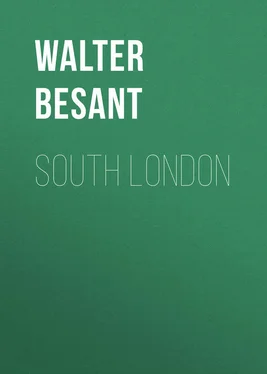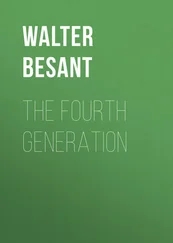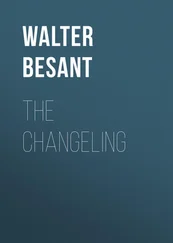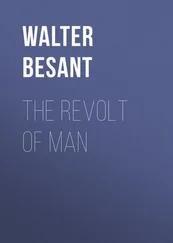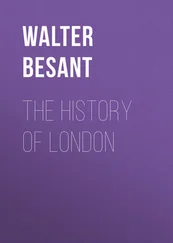Walter Besant - South London
Здесь есть возможность читать онлайн «Walter Besant - South London» — ознакомительный отрывок электронной книги совершенно бесплатно, а после прочтения отрывка купить полную версию. В некоторых случаях можно слушать аудио, скачать через торрент в формате fb2 и присутствует краткое содержание. Жанр: foreign_antique, foreign_prose, на английском языке. Описание произведения, (предисловие) а так же отзывы посетителей доступны на портале библиотеки ЛибКат.
- Название:South London
- Автор:
- Жанр:
- Год:неизвестен
- ISBN:нет данных
- Рейтинг книги:3 / 5. Голосов: 1
-
Избранное:Добавить в избранное
- Отзывы:
-
Ваша оценка:
- 60
- 1
- 2
- 3
- 4
- 5
South London: краткое содержание, описание и аннотация
Предлагаем к чтению аннотацию, описание, краткое содержание или предисловие (зависит от того, что написал сам автор книги «South London»). Если вы не нашли необходимую информацию о книге — напишите в комментариях, мы постараемся отыскать её.
South London — читать онлайн ознакомительный отрывок
Ниже представлен текст книги, разбитый по страницам. Система сохранения места последней прочитанной страницы, позволяет с удобством читать онлайн бесплатно книгу «South London», без необходимости каждый раз заново искать на чём Вы остановились. Поставьте закладку, и сможете в любой момент перейти на страницу, на которой закончили чтение.
Интервал:
Закладка:
If, however, there actually was any digging to be done, we must remember that the ground was a level; that there were no stones or rocks in the way, and that it consisted of a soft black humus , the result of ages of successive growths of sedge and coarse grass, formerly washed twice a day by the brackish waters of a tidal river. The object of the canal once attained, the ships drawn back again, Cnut, of course, left the place to be repaired by any who pleased. The broken Embankment let in the tide; the broken Causeway cut off any approach to the river; but Southwark was deserted. When things settled down a little, workmen were sent across from London, and the broken places were repaired. Then all traces of the canal disappeared.
Thirty-six years later, in 1052, Earl Godwine arrived at Southwark with a fleet and an army. He had no difficulty in passing the Bridge; he waited till flood-tide, and then sailed through 'on the south side.' It is quite impossible to explain this statement, or to make it agree with the difficulty felt by Cnut. The Bridge may have sustained some damage; there may have been a drawbridge; or Godwine's ships may have been smaller: one knows nothing. I merely state the fact as the Chronicler gives it.
One more glimpse of the Bridge from Southwark before we pass on to more modern times.
After Hastings, William marched northwards. Arrived near London, he advanced to Southwark, where he found the Bridge closed to him – closed, I believe, by knocking away some of the upper beams. This, of course, he expected; his friends within the City, of whom he had many, kept him acquainted with the changing currents of popular opinion. It is commonly stated that the citizens were terrified by the sight of Southwark in flames at his command. Southwark in flames! A few fishermen's huts were all that remained of the suburb, whose population since the time of the Pax Romana had been so precarious and so changeful. Five hundred years of battle, war between kings and tribes, invasion and ravage by Dane and Norseman, had not left of Southwark, once so beautiful a suburb, anything more than these poor huts and ruins of huts. William's soldiers burned them, because wherever a soldier of that period appeared, the thatch always caught fire spontaneously. William saw the flames, and regarded them not, any more than he regarded the flames that followed in his track all the way from Senlac. He gazed across the river, and remembered that twice had London defied all the strength of Swegen; that three times had London beaten off the great King Cnut when all England had surrendered; that in six sieges London had always been victorious; he knew, because his friends in the City would allow no mistake on that point, that the spirit of the citizens was as high now as it had been then; that they still remembered with pride the defeat of Cnut; and that not a few were anxious to treat William the Norman as they had treated Cnut the Dane. One knows not, exactly, what things went on within the walls; what exhortations, what wild talk, what faction fight; how the citizens rolled, and surged, a mass of wild faces, about their Folk-mote by St. Paul's. But of one thing we may be quite certain: that William did not expect the citizens to be afraid of him; and that, in fact, they were not afraid of him, whether he set fire to the huts of Southwark or not; they were not afraid of William, whatever the historians say. As for the Bridge, the old Roman Bridge, by this time there could hardly have been a single pile remaining of the original structure; yet it was constantly repaired.
We may restore to Norman London, therefore, not only the grey wall rising out of the level ground, without any ditch or moat outside, but also the Bridge of wooden piles with the transverse girders and beams for additional security, so that the old Bridge contained a whole forest of timbers like those which support the roof of an ancient hall. It was continually receiving damage. In the year 1091, a mighty whirlwind blew down a good part of London, houses and churches and all. It has been assumed that the Bridge was also destroyed; but the 'Chronicle' is silent on the subject. In 1092 there was a great fire in London; it is again assumed that the Bridge was destroyed, but again the 'Chronicle' is silent. In 1097, however, it is plainly stated that the Bridge had been almost washed away, and that it was repaired.
In 1136 the most destructive fire ever experienced by London, save that of 1666, spread through the whole City, from London Bridge, which it greatly damaged, all the way to St. Clement Danes on the west, and Aldgate on the east. One wonders what ancient monuments – walls of Roman churches, villas, and baths, still surviving halls and chambers of the Forum – were destroyed in this fire; Saxon houses of the better sort, with their great halls and courtyards; small Saxon churches of wood or stone, with low towers and little windows. Possibly there was no great loss: it was already seven hundred years since Augusta was deserted. Roman remains must have been scanty; the City was chiefly built of wood, with thatched roofs; the splendour of the latter centuries had not yet commenced. The Bridge, however, was either wholly or in part destroyed. It was repaired, because, fifty years later, FitzStephen, in his description of the City, speaks of the citizens watching the water sports from the Bridge. Indeed, the Bridge was now absolutely necessary to the City. A hundred years of order in the City – with the seas cleared of pirates, the Danes kept down, and merchants filling the river with ships, and the quays with merchandise – crowded the Bridge all day long with trains of packhorses, and the less frequent rude carts with broad grunting wheels which would have quite taken the place of the horse but for the bad roads. Southwark, during this period of rest, had become once more a town, or at least a village. Still, along the Embankment stood the thatched huts of the fisherfolk; but they were pushed farther east and west every year, until Lambeth and Rotherhithe were their quarters when the fish deserted the river and their occupation was gone. The Roman inns were gone, but new ones were springing up in their places. Bishops and abbots were looking on Southwark as a place of fine air, open to every breeze and free from the noise and crowd of London; ecclesiastical foundations were already springing into existence. In a word, the settlements of the south, after four hundred years of ruin and desertion, were once more beginning a new existence. The day when William rode up to the south end of the Bridge, and looked across upon a City that had not yet made up its mind about his reception, marked a new birth for the long-suffering suburb of the Embankment and the Causeway. A hundred years later still – in 1176 – they began to build their Bridge of Stone.
CHAPTER III
A FORGOTTEN MONASTERY
The earliest maps of South London are those of the sixteenth century. But it is perfectly easy from them and from the historical facts to draw a map of all that country lying between Deptford and Battersea which we have agreed to call South London. Thus, to put the map into words, there were buildings all along both sides of the Causeway as far as St. George's Church; in the middle of the Causeway stood St. Margaret's Church, facing St. Margaret's Hill; on the right-hand side, just under the Bridge, was St. Olave's Church. The Bridge was thus protected on the north by St. Magnus, on the south by St. Olave – two Danish saints – and in the middle by the patron saint of its chapel, St. Thomas à Becket. There were houses along the Embankment on either side, but more on the west of the Causeway than on the east. A few houses were built already on the low-lying ground near the Causeway; for instance, on the south and south-west of St. Mary Overies. On the east of St. Olave's a single straight lane with no houses ran across country to Bermondsey Abbey; on the west of the Causeway another lane led to Kennington Palace, from which another lane led to the Causeway from Lambeth and Westminster to the Dover Road. That was the whole extent of Southwark.
Читать дальшеИнтервал:
Закладка:
Похожие книги на «South London»
Представляем Вашему вниманию похожие книги на «South London» списком для выбора. Мы отобрали схожую по названию и смыслу литературу в надежде предоставить читателям больше вариантов отыскать новые, интересные, ещё непрочитанные произведения.
Обсуждение, отзывы о книге «South London» и просто собственные мнения читателей. Оставьте ваши комментарии, напишите, что Вы думаете о произведении, его смысле или главных героях. Укажите что конкретно понравилось, а что нет, и почему Вы так считаете.
